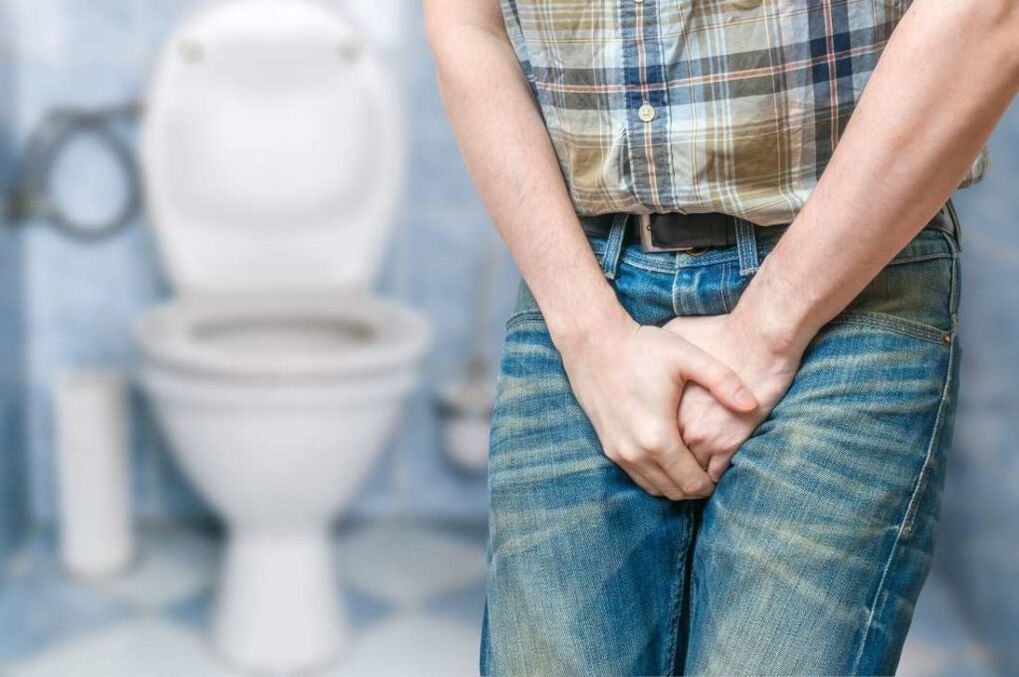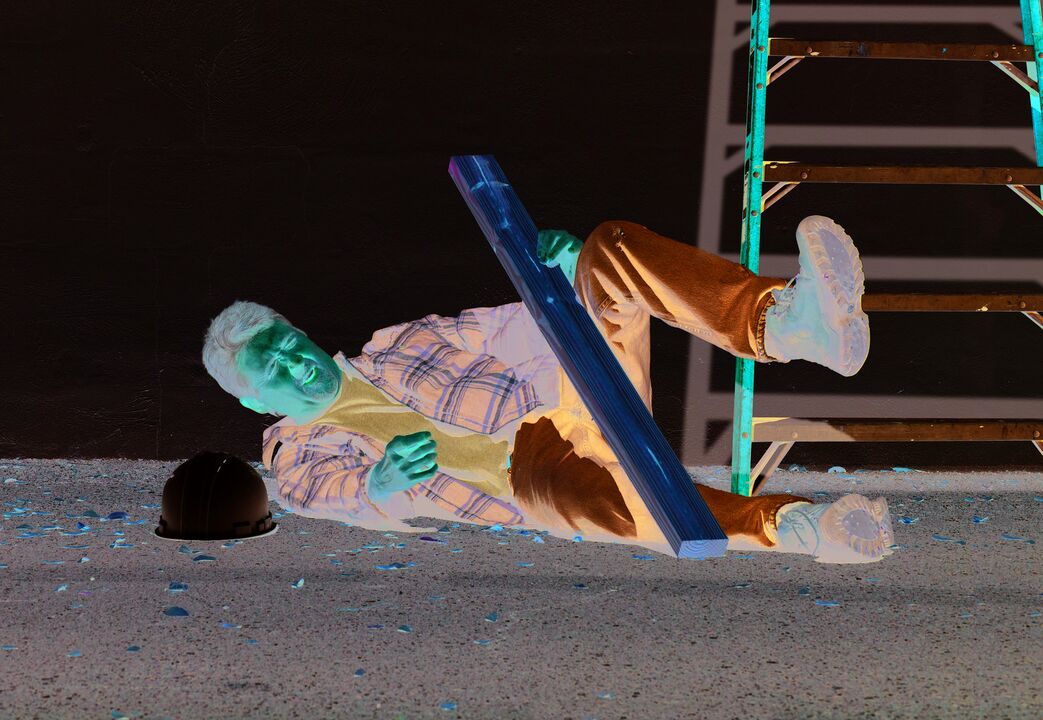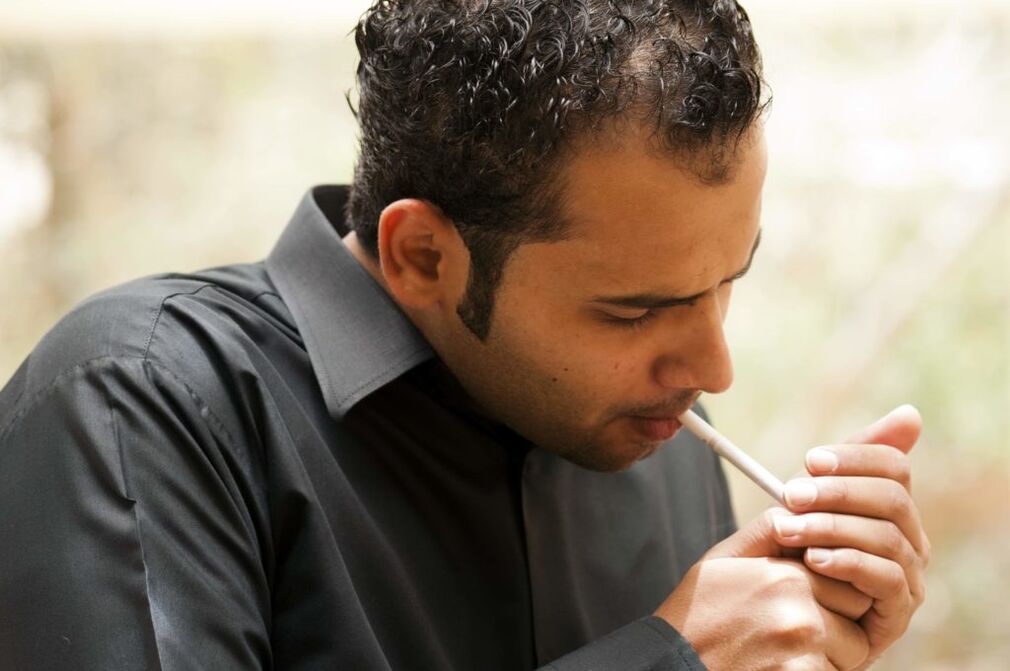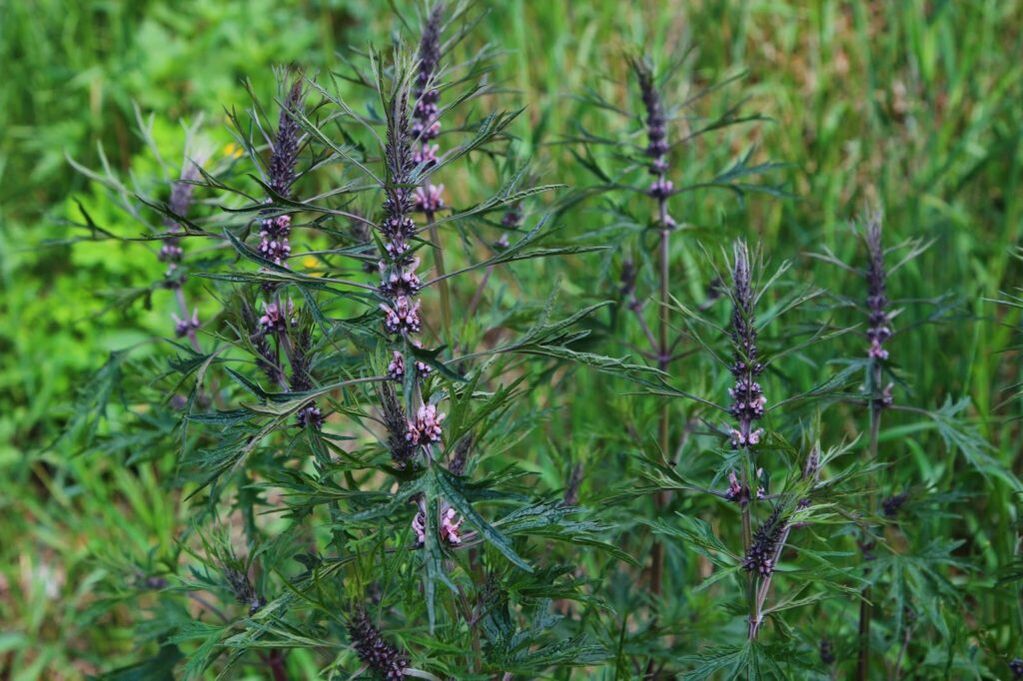There are several forms of prostatitis, which vary in symptoms and course of the inflammatory process. Despite the fact that, in general, this disease has been studied quite well, there is one form of which is still little known - this is bacterial prostatitis. This condition is also called chronic pelvic pain syndrome and according to the latest information, it occurs in one in five men on the planet. Despite such a widespread occurrence, the disease is still a mystery to doctors and is very difficult to treat.
Bacterial and non-infectious prostatitis: what is the difference?
Bacterial or non-bacterial prostatitis is often confused with non-infectious prostatitis. In fact, these are two different diseases with different manifestations and causes of development.
Chronic abacterial prostatitis is a disease without clear symptoms of inflammation in the prostate gland. Moreover, in the vast majority of cases, a detailed examination does not allow to determine the presence of an inflammatory process in the organ. At the same time, non-infectious prostatitis is an inflammatory disease that has well-defined and well-studied causes. Non-infectious prostatitis is caused by a violation of the trophism of the prostate gland, as a result of which the secretion of the prostate is impaired and the inflammatory process develops. Non-infectious prostatitis is most often diagnosed in elderly patients, while non-bacterial prostatitis can occur in men of all age groups.
To avoid confusion, non-bacterial prostatitis is also called chronic pelvic pain syndrome, which perfectly characterizes the main symptoms of this complex disease.
Typical symptoms

With little need, painful discomfort is felt.
The signs of bacterial prostatitis are not similar to the symptoms of inflammation of the prostate gland, so many doctors assume the neurological nature of the development of this disease.
With bacterial prostatitis, the symptoms are as follows:
- persistent aching pain in the pelvic region;
- increased pain syndrome when urinating;
- severe discomfort with ejaculation;
- general physical illness;
- nervous tension.
As a rule, pelvic pain appears for a long time, in the period from three months to six months. The pain syndrome is painful, monotonous, can pass on its own without the use of analgesics and then return spontaneously. The pain radiates to the testicles, perineum, anus. Sometimes there are short-term episodes of "nervous" pain in the lower back, lower abdomen, groin.
Patients complain of worsening erections. During ejaculation, he feels intense tension, ejaculation is accompanied by sharp pains. During urination, attacks of severe pain are also possible.
Simultaneously with these symptoms, there is a strong emotional depression. The husband is tense, sensitive to stress, some patients have insomnia and neurosis-like condition.
Causes of bacterial prostatitis

Falling and as a result of a back injury can cause illness.
Non-bacterial prostatitis is not well understood, so doctors give the possible causes of this disease.
The exact mechanism of development and pathogenesis of chronic abacterial prostatitis has not yet been established.
Apparently, the disease may have the following reasons for its development:
- inflammation of the ligaments and tendons of the pelvic floor;
- autoimmune processes;
- an increase in the ligaments of the pelvic floor;
- back injuries and chronic spinal diseases;
- violation of blood microcirculation in the prostate gland;
- neuropsychiatric reasons;
- intercellular parasites and pathogens in the prostate.
Inflammation of the ligaments and tendons of the pelvic floor can develop due to infectious diseases of the organs of the genitourinary system, located in the immediate vicinity. As a result, the infection spreads to the ligaments, they become inflamed and increase in size, squeezing and irritating nearby nerve endings. The pain that a man feels at the same time can radiate along the nerves, giving in the lower back, groin, lower abdomen or anus.
Another suspected cause of chronic abacterial prostatitis or CABD are autoimmune processes in the body. As a result of such a failure, the immune system begins to perceive the cells of the prostate gland as a foreign element and attacks them with immune cells, which leads to the appearance of typical symptoms of bacterial prostatitis.
Another suspected cause is viral prostatitis, suffered by the patient in childhood. Since the prostate in boys is not yet sufficiently developed, viral inflammation of this organ may have no vivid symptoms and turn into a chronic form, which in an adult male is manifested by pelvic pain syndrome.
The disease can also be associated with various pathologies of the spine, injuries or osteochondrosis, as a result of which occurs compression of the nerve roots of the spine, which causes pain and rupture of the prostate gland.
Some doctors have suggested that this disease may be due to congenital failure of the prostate gland circulation, due to which the organ can not cope with its function. Over time, this leads to the onset of chronic pain characteristic of bacterial prostatitis.
In addition, there is a theory that CABD can be caused by neuropsychiatric disorders, for example, severe stress, neuroses, and vascular dystonia. In this case, the pathology should be considered a psychosomatic illness.
Another theory claims that the disease may be associated with parasites or intracellular microorganisms, the size of which is so small that it does not allow the detection of the causative agent of the disease by standard methods.
Risk factors

Smoking can contribute to prostate problems.
Apparently, the risk factors for developing chronic pelvic pain syndrome in men are:
- previous diseases of the prostate gland;
- chronic stress;
- back injury;
- hypothermia of the pelvic organs;
- urogenital infections;
- chronic diseases of the testicles;
- bad habits;
- circulatory disorders of the pelvic organs;
- hypodynamics;
- pelvic injury.
The risk of developing the disease increases if a man does not eat properly. Lack of essential vitamins and trace elements can affect not only the overall well-being, but also the work of the prostate gland.
Differential diagnosis
To establish a diagnosis of chronic pelvic pain syndrome, the following conditions are necessary:
- prolonged pain, for a period of three months;
- lack of pathogenic microorganisms in prostate secretion;
- lack of chronic foci of infection in the body;
- discomfort with ejaculation.
To establish a diagnosis, differential diagnosis is made with prostate cancer, neurological syndromes, spinal pathologies, leading to irritation of the spinal nerve roots.
A general urological examination is imperative - palpation of the prostate, transrectal ultrasound of the organ, study of the composition of prostate secretion. You should also rule out inflammatory diseases of the testicles, bladder and kidney pathology, which may appear as pain syndrome with different localization.
It is essential to be examined by a neurologist and therapist. You should also consult a proctologist to rule out rectal pathologies.
Treatment methods
An integrated approach is used in the treatment of bacterial prostatitis. Therapy is chosen by the urologist, taking into account the characteristics of the course of the disease in the patient. This takes into account the general health and psycho-emotional state of the husband.
Therapy includes the following methods:
- symptomatic treatment;
- prostate massage;
- physiotherapy methods.
If necessary, treatment can be supplemented with sedatives, homeopathy and herbal medicines.
Drug therapy

Before using any medication, you should consult your doctor.
For the symptomatic treatment of bacterial prostatitis, drugs of the following groups are prescribed:
- antibiotics of a broad spectrum of antimicrobial action;
- non-steroidal anti-inflammatory drugs;
- antispasmodics and analgesics;
- blocking alpha;
- sedatives and antidepressants.
In the treatment of non-bacterial prostatitis, antibacterial agents are used, however paradoxical it may sound. The fact is that the theory of microorganisms that can not be seen under the microscope remains open, so antibacterial agents are prescribed for prevention. Urologists say that these drugs help to quickly eliminate the symptoms of the disease, so their use is fully justified.
Antispasmodics and analgesics are used to reduce pain. Nonsteroidal anti-inflammatory drugs can also be used as symptomatic therapy.
To facilitate the urination process, the administration of alpha-blockers is indicated.
It should be noted that the optimal treatment regimen is chosen individually for each male. You should not self-medicate, foolishly taking the drugs of the listed groups, it is better to trust an experienced specialist.
Prostate massage and physiotherapy
In general, treatment of bacterial prostatitis with medication shows good results. Other methods are needed to consolidate the therapeutic effect.
Prostate massage improves organ function, prevents stagnation of prostate secretions, normalizes blood circulation and metabolic processes. He is appointed to a course of 10 procedures.
As physical therapy, magnetic effects, ultrasound therapy, vasodilator electrophoresis and other methods are described. Patients are also shown spa treatment, for example, mud therapy.
Folk remedies

Maternal herb tinctures are good for treating diseases.
Treatment of non-bacterial prostatitis with folk remedies is possible only after consulting a doctor, otherwise such treatment will not help, but will only worsen the health condition.
For the treatment of non-bacterial prostatitis with folk remedies, you can use:
- decoction of soothing herbs to improve overall health - chamomile, lemon balm, valerian;
- microcrystals with anti-inflammatory decoction of St. John's wort, calamus, yarrow;
- warm baths with calamus, soda or nettle decoction;
- suppositories with pumpkin seed oil;
- tampons with honey and propolis.
Use of any of the listed funds should be agreed with your doctor. The suppositories are prepared as follows: five parts cocoa butter are melted in a water bath, then one part honey and one part propolis (or two parts pumpkin seed oil) are added. The mass is then cooled, suppositories 4 cm long and 1 cm in diameter are formed and cooled in the refrigerator. Such suppositories should be injected into the rectum after an overnight cleansing enema for two weeks.
Possible complications and prevention
Bacterial prostatitis requires timely diagnosis and treatment. Otherwise, pelvic pain syndrome can lead to infertility, impotence, vesicles and other problems of the male genitourinary system.
To prevent the development of the disease, it is necessary to lead an active lifestyle and eat properly. It is important to maintain immunity, to prevent hypothermia of the pelvic organs. Men need a regular sex life with a constant partner to prevent the development of stagnant processes in the prostate gland. It is also necessary to regularly undergo preventive examinations with a urologist.
























